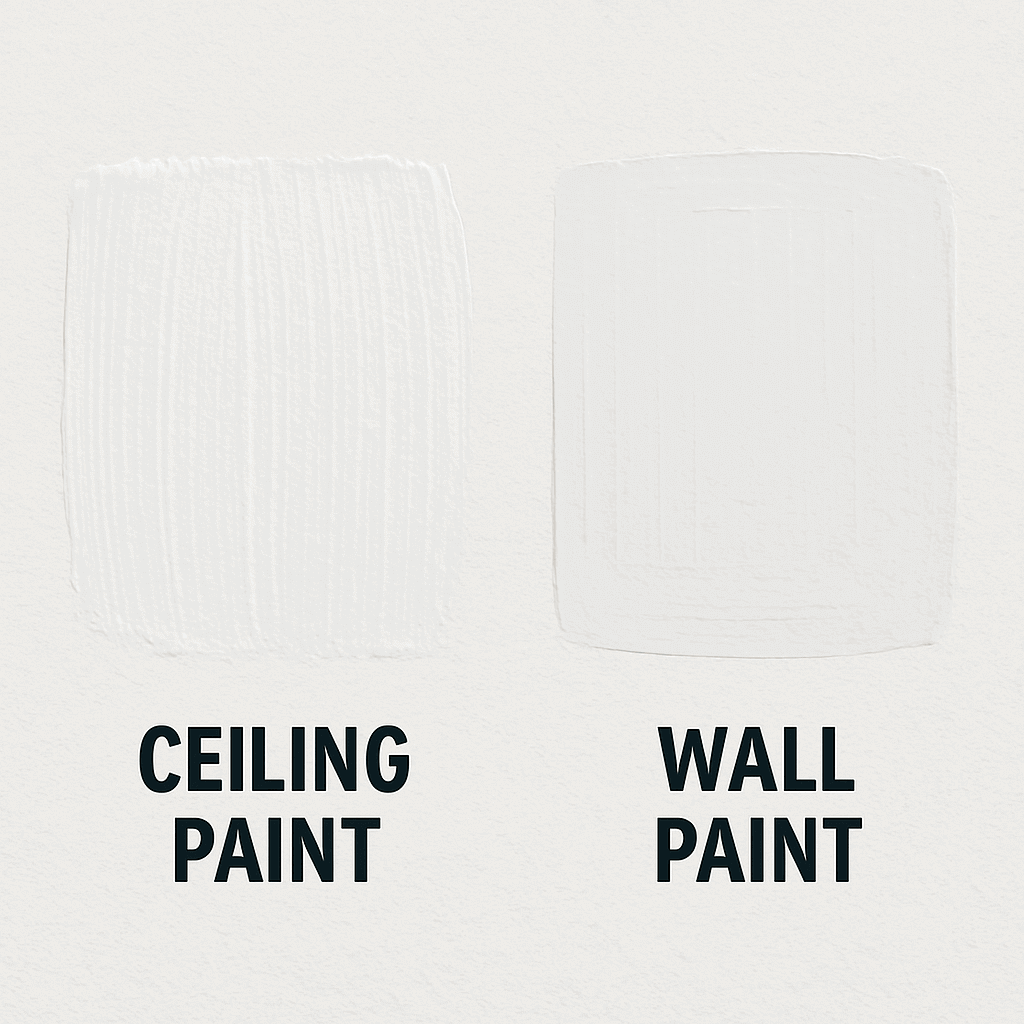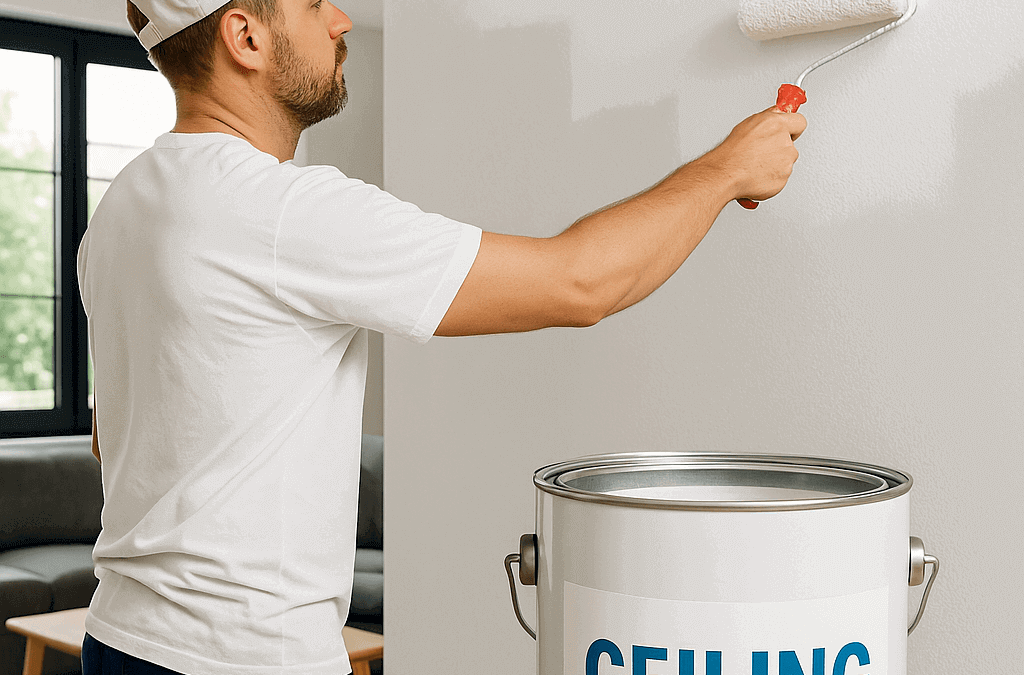Ceiling paint is designed specifically for ceilings, where it helps create a flat, non-reflective surface that hides imperfections. But what if you have some leftovers and don’t want it to go to waste? Can you use it on your walls instead? It’s a question many homeowners ask when they’re trying to save time and money. In this guide, we’ll break down the key differences between ceiling and wall paint, weigh the pros and cons, and help you decide when (or if) it’s a good idea.
Ceiling Paint vs. Wall Paint
At first glance, ceiling paint and wall paint might seem pretty similar. After all, they both cover surfaces, right? But in reality, they’re designed for different jobs.
- Ceiling paint is thicker, has a flat finish to reduce light reflection, and does a great job of hiding flaws.
- Wall paint is built for durability—it’s washable, comes in different sheens (matte, eggshell, satin, semi-gloss), and holds up to everyday wear and tear.
- Ceiling paint is formulated to stay put with minimal dripping, while wall paint is designed for frequent cleaning and long-term use.

Difference Between Ceiling and Wall Paint
Both types of paint contain similar ingredients, but their formulations serve different purposes:
- Sheen: Ceiling paint has a flat finish to prevent glare, while wall paint offers various finishes depending on the look and durability you need.
- Durability: Walls see a lot more action, so wall paint is made to resist stains and scrubbing. Ceiling paint? Not so much.
- Adhesion: Ceiling paint is thicker, which can make it harder to adhere properly to walls. This could lead to chipping or difficulties when cleaning.
- Colour Choices: Most ceiling paints come in white or off-white, whereas wall paints offer a huge range of colours to match your style.
Can Ceiling Paint Be Used on Walls?
Short answer: Yes, but with some caveats. Ceiling paint can work on walls in certain situations, such as:
- Low-traffic areas like basements, storage rooms, or closets.
- Aesthetic preference if you’re going for a flat, non-reflective finish.
- Temporary coverage when durability isn’t a priority.
That said, ceiling paint isn’t ideal for high-traffic spaces like living rooms, hallways, or kitchens. Since it’s not designed for washability or stain resistance, it can chip or show marks easily, making maintenance a hassle. If you’re planning a full interior repaint, choosing the right paint for each space will save you trouble in the long run.
Also, if you’re switching paint types or cleaning up after a project, it’s important to dispose of leftover materials responsibly. Check out our guide on how to dispose of paint cans properly to stay safe and eco-conscious.

Ceiling Paint for Bathroom Walls: Is It a Good Idea?
Bathrooms are tricky because they need moisture-resistant paint to handle humidity and condensation. Here’s why ceiling paint might not be the best choice:
- Ceiling paint can absorb moisture, which may lead to mold or mildew.
- Peeling and cracking are more likely due to constant humidity.
- Difficult to clean, making it impractical for a high-moisture environment.
Instead, go for satin or semi-gloss wall paint. These finishes are designed to handle moisture and are much easier to wipe down.
Pros and Cons of Painting Walls with Ceiling Paint
✅ Pros:
- Budget-friendly if you already have leftover ceiling paint.
- Works well in low-traffic areas where durability isn’t a concern.
- Flat finish hides imperfections, great for a subtle, modern look.
❌ Cons:
- Not washable, making stains and marks tough to remove.
- It’s less durable, meaning it’s more prone to chipping and wear.
- Limited color options, mostly white or off-white.
- Not moisture-resistant, so not ideal for kitchens or bathrooms.

The answer is yes. You can use ceiling paint on walls, but it’s not always the best choice. Ceiling paint is designed for a job where durability and washability aren’t major concerns. If you want long-lasting results, it’s best to use wall paint that’s made to withstand everyday use and cleaning. For surfaces that require more durability—like garage doors—consider using a specialised paint designed for those areas.
One potential issue? Paint bubbling—especially in humid areas. This happens when ceiling paint doesn’t adhere properly, often due to trapped moisture.
If you’re unsure about which paint is right for your project, our residential painting experts can help. We’ll guide you through your options and ensure a professional finish that lasts. Learn more about how to paint a door.


Recent Comments